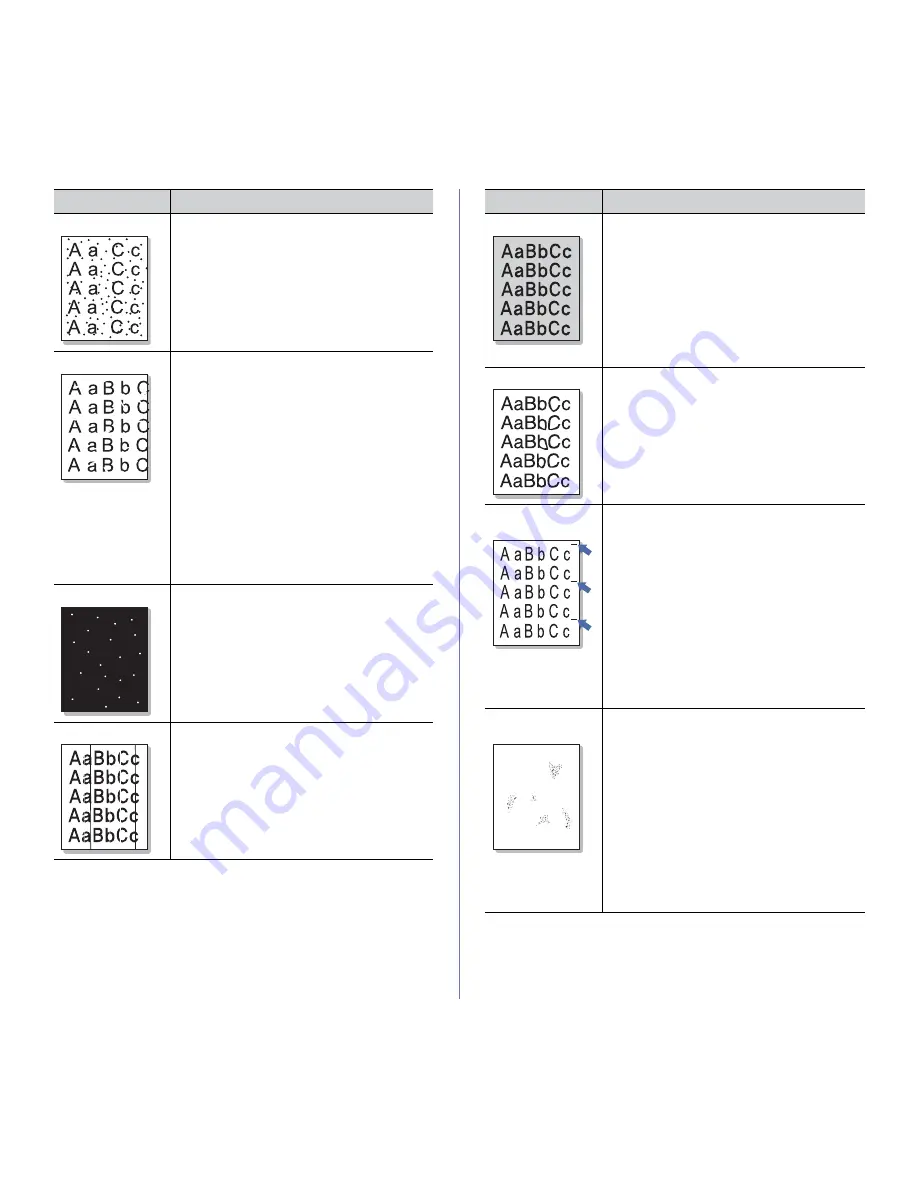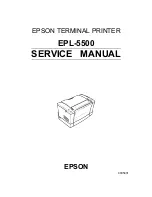
Troubleshooting
_ 12
Toner specks
•
The paper may not meet specification, for
example, the paper may be too moist or rough
(See "Selecting print media" on page 2).
•
The paper path may need cleaning (See
"Cleaning the inside" on page 1).
Dropouts
If faded areas, generally rounded, occur randomly
on the page:
•
A single sheet of paper may be defective. Try
reprinting the job.
•
The moisture content of the paper is uneven
or the paper has moist spots on its surface.
Try a different brand of paper (See "Selecting
print media" on page 2).
•
The paper lot is bad. The manufacturing
processes can cause some areas to reject
toner. Try a different kind or brand of paper.
•
Change the printer option and try again. Go to
Printing Preferences
, click
Paper
tab, and
set type to
Thick
(See "Opening printing
preferences" on page 2).
If these steps do not correct the problem, contact
a service representative.
White Spots
If white spots appear on the page:
•
The paper is too rough and a lot of dirt from a
paper falls to the inner devices within the
machine, which means the transfer belt may
be dirty. Clean the inside of your machine.
Contact a service representative.
•
The paper path may need cleaning. Contact a
service representative.
Vertical lines
If black vertical streaks appear on the page:
•
The drum inside the toner cartridge has
probably been scratched. Remove the toner
cartridge and install a new one (See
"Replacing the toner cartridge" on page 2).
If white vertical streaks appear on the page:
•
The surface of the LSU part inside the
machine may be dirty. Clean the LSU, contact
a service representative.
Condition
Suggested Solutions
Black background
If the amount of background shading becomes
unacceptable:
•
Change to a lighter weight paper (See
"Selecting print media" on page 2).
•
Check the environmental conditions: very dry
(low humidity) or high humidity (higher than
80% RH) conditions can increase the amount
of background shading.
•
Remove the old toner cartridge and, install a
new one (See "Replacing the toner cartridge"
on page 2).
Toner smear
•
Clean the inside of the machine (See "Cleaning
the inside" on page 1).
•
Check the paper type and quality (See
"Selecting print media" on page 2).
•
Remove the toner cartridge and then, install a
new one (See "Replacing the toner cartridge"
on page 2).
Vertical repetitive
defects
If marks repeatedly appear on the printed side of
the page at even intervals:
•
The toner cartridge may be damaged. If a
repetitive mark occurs on the page, print a
cleaning sheet several times to clean the
cartridge. After the printout, if you still have the
same problems, remove the toner cartridge
and install a new one (See "Replacing the
toner cartridge" on page 2).
•
Parts of the machine may have toner on them.
If the defects occur on the back of the page,
the problem will likely correct itself after a few
more pages.
•
The fusing assembly may be damaged.
Contact a service representative.
Background
scatter
Background scatter results from bits of toner
randomly distributed on the printed page.
•
The paper may be too damp. Try printing with
a fresh ream of paper. Do not open packages
of paper until necessary so that the paper
does not absorb too much moisture.
•
If background scatter occurs on an envelope,
change the printing layout to avoid printing
over areas that have overlapping seams on
the reverse side. Printing on seams can cause
problems.
•
If background scatter covers the entire surface
area of a printed page, adjust the print
resolution through your software application or
the printer properties.
Condition
Suggested Solutions
A
















































